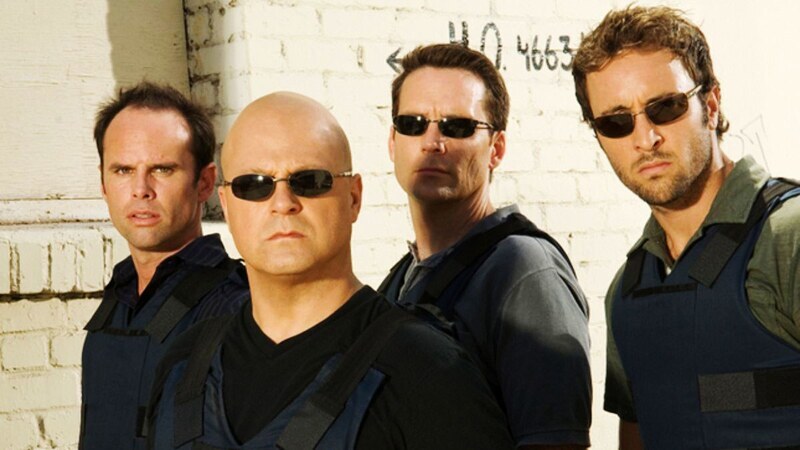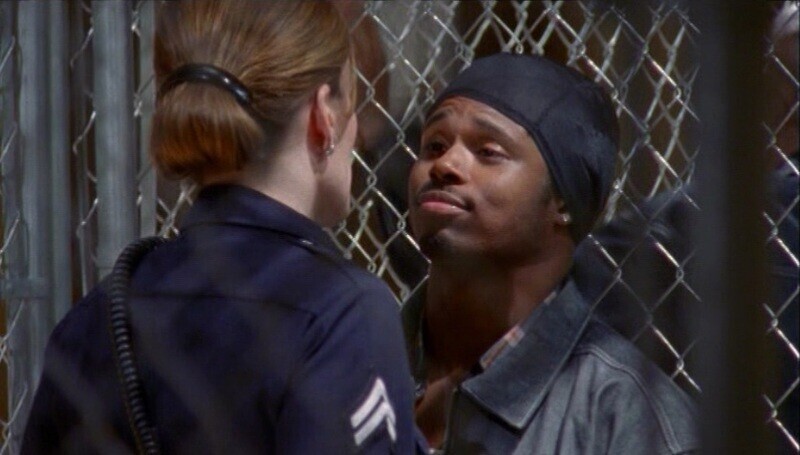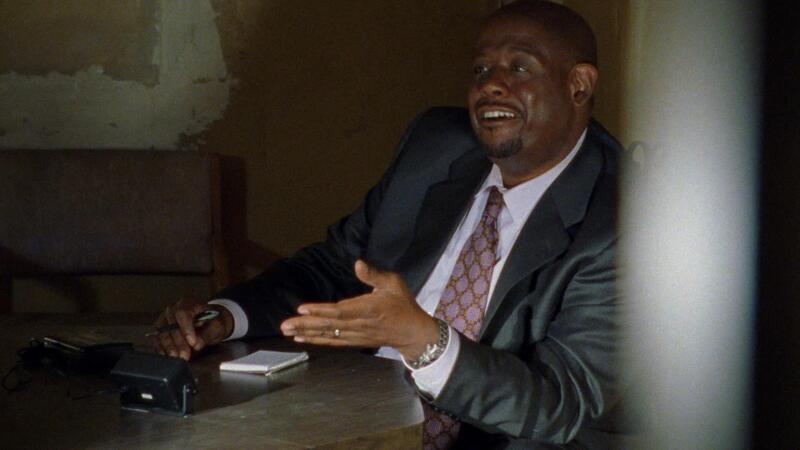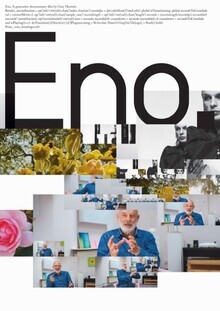
A few weeks ago, after a sudden rush of praise invading my timeline on Twitter for Shawn Ryan’s procedural cop drama “"The Shield," I decided that this was as good a time as any to finally get into the show. It did not take long (in fact, maybe two or three episodes) before my mind immediately went to HBO’s “"The Wire," with good reason. "The Shield" and “The Wire" could and should be tied together in our collective memories, as both are the children of a rocky marriage between all the goodwill that police had engendered post 9/11 and the shock and awe of the Rampart scandal.
The latter was a large-scale corruption ring that was investigated between 1998 and 2000, leading to 70 LAPD personnel being implicated in various kinds of corruption, including officially sanctioned murders and evidence tampering. Both “The Wire” and “The Shield” aimed for a style somewhere between Neorealism and a pseudo-documentary, often using handheld cameras to create a feeling of realism. Additionally, both shows observed institutional rot. "The Wire" more explicitly shows how the rot of institutions affects those governed, in an overarching portrait of a city.
But "The Shield" is no stranger to this impulse either, and in quite a few episodes shows itself to at least be cognizant of the fact that there is a cumulative effect on the communities that the police surveil. It’s fascinating to observe the differences in how those two shows depict people from those communities. Casting, language, character names are incredibly instructive as far as revealing what point-of-view the shows are favoring, conveying authenticity or the lack, and ultimately showing what the series think of people in Black and brown communities.

"The Shield" is a character study wrapped in a police procedural written by a monster energy drink. It is told mainly through the eyes of four of the dirtiest cops you’ll ever see, and the institution upholding them. It is also clear that the series is the work of someone who is writing from a perspective gleaned from being around the police. Creator Shawn Ryan admits to this being an aspect of the genesis of the show, mentioning that “The Shield” is in part the consequence of police ride-alongs he’d been on as well as his desire to do something darker after the Don Johnson network cop series “Nash Bridges.” But these admissions aren’t necessary, as it’s clear in the viewing where the show’s point-of-view is coming from. While complex in every other facet, "The Shield" presents the Los Angeles-area Black community and its characters mainly in a simple-minded, one-dimensional, denigrating manner.
This is truthful, in an ironic sort of way. The truth of the depiction lies not in any reality concerning the struggles, anxieties, and intersecting complexities of communities, but as an unvarnished depiction of police attitudes towards those communities. There is a useful aspect to being presented with a piece of art or propaganda (however you see it) that seems nearly untouched by political or social propriety. "The Shield" as a series acts as a seven-season confession room for the police. Surrounded by other police in a space they believe is safe enough to have this conversation in, they start revealing through fiction exactly who they are, what they do, and how they see the communities they’re supposed to be keeping safe.
Let’s start with the depiction of gang members and various criminals of color on “The Shield,” perhaps the most convincing tell of where the show’s POV is coming from, conveyed in language, characterization, story arcs, and sometimes in the type of actor cast in a role.

For instance, one of the show’s initial entries into the world of street gangs is the character Rondell Williams, a high-ranking player in the show’s fictional gang the “one niners,” played by Walter Jones in a jarringly silly performance that in some ways works if you understand "The Shield" as an exploitive piece of art that reflects the attitudes of its main characters: corrupt, mainly white police officers. The man Williams reports to is “Kern” Little, a rapper who used to be the leader of the gang. Kern is played by real life rapper Sticky Fingaz. The two represent exactly the problematic dynamics in casting and characterization on “The Shield.”
Half the problem is that a lot of the street players in the show are woefully underwhelming performers who don’t pull off the necessary authenticity to be believable as gang members to anyone who’s been around actual gang members, or even just tough guys. Jones as Rondell is not a particularly strong actor, and as such, in order to play tough, he tends to act forward of the face instead of acting from behind the face or the eyes. Protruding eyes and outstretched facial expressions to prove toughness are the order of the day, rather than the quiet reserve that’s characteristic of a career criminal. Sticky Fingaz’s casting represents the other half of the problem, which is the over-reliance on hip hop/rap to convey “realism” to an audience. It's true many rappers have affiliations with gangs, but there is a clear, known difference between rappers and gangsters. The entertainment industry has a garish infatuation with that particular aspect of hip-hop and hires rappers to play outsized versions of characters that are more indicative of the imaginations of white folks than the reality.
Even the superficial adhesives of Black culture in "The Shield" feel out of place. They’re flat, impoverished recreations of the real thing, outdated even when they first appeared on the series over 20 years ago. This problem extends to something as seemingly minor as the names of gangster characters. In contrast to what all the film and TV gangsters written by white folks would have viewers believe, Black gangsterdom/community is not overly reliant on the combination of an initial and the word bone (J Bone, C Bone, T Bone, etc) or an initial and any word, for that matter (T-Gun in "The Shield"), and I have never in my life run into gangsters who go by names like Felonious T, Slap, or Deadeye, to name three other street criminals on "The Shield". It would have been much easier and more convincing to just refer to the characters by their given names, but the show seems more obsessed with street names, likely because the show’s cops are obsessed with them and bemused by them and pass the laughs they get off of these people’s nicknames to the audience. Additionally, most of these characters are portrayed as bumbling/inept (Rondell Williams, Taylor Orr) or sometimes a combination of vicious and bumbling. They almost steal the wrong item. They kill for nonsensical reasons. They steal food stamps. Week after week the show engaged in a carnival attraction approach to real life woes in the inner-city of Los Angeles. It was always focused on the most ghoulish or ridiculous characters, shot out of the cannons of the hammiest, most cartoonish performances this side of Jimmy Walker as J.J. on “Good Times.”

Meanwhile, the casting of black administrators and police personnel garnered names as respected as Forest Whitaker, CCH Pounder, Carl Weathers, Ana Marie Horseford, and Brian White. The community scores their highest gold star with a small story arc in “On Tilt” for Andre 3000 that’s drenched in respectability politics. The story of a community member creatively taking the law into his own hands and coming up with a way to clear his streets (of sex workers) is admirable on an individual level while also acting as reinforcement for an answer that remains popular to those looking in from the outside through the lens of “Why don’t these people get it?”. The biggest name playing a gangster in the show is Anthony Anderson as Antwon Mitchell, and while Anderson is compelling as an emotionally scarred gang leader (a pivotal scene with Glenn Close impresses), whenever the performance veers into the intersection of the pulpit and the political soapbox, he comes off as an unconvincing Kroger-brand version of Malcolm X. Anderson’s inability to provide layers and levels makes it clear he doesn’t hold the weight or carry the multitudes of an actor like “The Wire” and “Boardwalk Empire” star Michael K. Williams. The storylines fare no better, many are reductive, (the show's treatment of Black Women is another essay unto itself) indicating a paternalistic condescension, and often echoing a common talking point of the police that the Black community is extremely apathetic.
It gets worse when it comes to any story regarding radical black politics within the community, where the black folks expressing these sentiments are either revealed to be fraudulent, criminal, or insane. The former takes its form once again in the initial episode of season four when Antwon Mitchell makes his first appearance, fresh out of jail, and presents himself as reformed by questioning the role of police and a litany of poor social policies in the community, the show makes it pretty clear Antwon is not on the up and up from jump. In another episode in S3 titled “Slipknot” (possibly the show’s most reprehensible episode) a gang member called Twizzy sets up a lynching for the sole purpose of stopping a truce and getting “the Black back” to a neighborhood. Yes, you read that right: a Black person strings up a black child from a tree to bring a strong sense of solidarity back to the community. This is the whitest of white nonsense, something that could be born only in the audacious imaginations of a guilty party—a vile and disingenuous plot to contemptuously undermine empathy with a beleaguered community.
I don’t think “The Wire” was ever as effective as "The Shield" has been depicting how cruel, inept and asphyxiating the police can be. It was never as stark, never as clear-eyed. But in areas where "The Shield" struggled mightily, "The Wire" excelled. "The Shield" usually lent complexity only to those in the police department and various forms of legislative and administrative government. But "The Wire" extends complexity to just about everyone, especially in the Black community, criminal characters included.

Wood Harris, who played gang leader Avon Barksdale, was already an established player in Black Hollywood when he was cast on “The Wire,” while Idris Elba, who played Avon’s second-in-command Stringer Bell, was one of TV’s major discoveries of the past twenty years. An eclectic usage of well-trained actors filled out the fictional Baltimore underworld, from Idris Elba to Michael B Jordan and Lance Reddick to real-life community members like Felicia Pearson (Snoop) and Melvin Williams (The Deacon) to rappers like Fredro Starr (Marquis “Bird” Hilton) and Method Man (Melvin “Cheese” Wagstaff). All helped create something that both articulated and challenged stereotypes about Black life in working class neighborhoods, including street life. Bubbles (Andre Royo), an addict initially discovered by police detective Kima Greggs (Sonja Sohn), is given more humanity and dimension in his first few episodes of “The Wire” than any addict was given over the entire run of “The Shield.”
The language is precise and not a generalized representation of slang that denies the specificity of region, accent, and syntax. There are very few “I be’s” and “Yo’s” improperly placed. Gang members run the gamut from incredibly intelligent men to downright dunces. The second episode of its inaugural season sees D’Angelo Barksdale delivering spot-on observations about late capitalism power dynamics by way of the chicken nuggets. The scene signals the show's identity early on, much like “The Shield” signals its tone about police corruption right out the gate with Vic's shocking murder of a cop at the end of the pilot. But “The Shield” offers no equivalent of the McNugget scene (never mind the entirety of “The Wire”) in terms of representing a community and fully humanizing its characters.
Zoom out to a wider perspective and you see the same deficiencies. In season three of “The Wire,” there’s a fictional zone of permitted drug-dealing called Hamsterdam, a half-cocked bit of brilliance hatched by Howard “Bunny” Colvin (Robert Wisdom). The mirror image on “The Shield” is the asset forfeiture program overseen in Season Four by Monica Rawlings (Glenn Close). Both are decently argued as to the pros and cons of their respective approaches, but also in ways that subtly illustrate the points-of-view of the shows themselves. In the case of the asset forfeiture program on “The Shield,” it’s clear that the show feels that the program is a move in the right direction to help the police do their jobs and make the community a safer place. But what perspective shaped this take on asset forfeiture?

“There were these cops who were running roughshod over this poor ethnic neighborhood, and yet they were effectively stopping a lot of crime,” Shawn Ryan once said in an interview. “It was an interesting ethical question.” Ryan wasn’t talking about any fictional storyline on “The Shield,” but of the Rampart scandal that partly inspired the series. I would argue that the behavior of police in the Rampart case was almost completely ineffective policing and not any sort of moral quandary. And yet when Rawlings (played with intelligence and wit by Close) enters the show, her strategy is effective enough that any resistance to it is mainly indicative of the politics that prevent a woman from putting her best foot forward in a male-dominated space. We come away thinking the program failed largely because it was presented by a woman, and because it couldn’t survive in the arena of social politics, where supposedly too many people are willing to be soft on crime based on racial aesthetics.
Throughout, Rawlings looks like a stand-up woman with a moral compass and a principled approach, while the former Captain and supervisor of “The Barn,” David Aceveda (Benito Martinez), who by that point has become a city councilman, battles her from the start, on grounds that this policy—exemplified by the seizure of a woman's house that puts her and her children on the streets, simply because her son happens to deal drugs—is a form of collective punishment, as well as racially discriminatory in practice. Aceveda comes off as a sneak who is politicking for his job, even though his concerns about the terrible negative impact of Monica’s program on non-gang affiliated members of the community are valid.
This subplot is but one part of an ongoing message in "The Shield" that anyone who wants to try to protect marginalized people from the threats of an empire that hates them is a fraud of some sort. Hamsterdam in "The Wire," by comparison, is a solution rooted in empathy. It shows the positive aspects of what happened to the areas surrounding Hamsterdam and how the zone was improving the state’s ability to place some controls and regulations on addiction and sex work that created a safer environment.

The difference in these two approaches and how the shows treat them is less about veracity and authenticity and more a further example of how story arcs and lines inform viewers of who is doing the talking, and how they probably see the communities they are depicting. We don’t need film and TV to teach us morality. But it is nevertheless a fact that a great number of folks get their information on what’s going on in places they’ve never been to from film and TV and, from there, go on to determine the value of these people. Their conclusion may make themselves known in voting booths when it comes time to support politicians, judges, or referendums on police and prisons.
To be fair, both series suggest that policymakers and police are contributing to, or at a minimum not preventing, cycles of drug addiction and violence. The difference in the shows is how they get there. and who they believe is most to blame. And it is represented in the story arcs, be they smaller stories that resolve within an episode, or ones drawn out over a season, in which Black people are depicted either their own worst enemies or as the enemies of an adversarial system that has never especially cared for them. (Notice that I said enemies of an adversarial system, not victims.) Comparing these two shows should compel viewers to reckon with the way we discuss white writers who venture into stories that deal with Black communities.
Both of these shows are excellent, despite my interrogation of the weakness of “The Shield” in one specific regard. But the power of Ryan’s series as a portrait of police conduct in Black communities lies in the fact that it is so unimpeded by shame that it accidentally ends up placing blame exactly where it should go. "The Wire," on the other hand, is proof that you can show the more shameless aspects of broken institutions, as well as the effects those institutions have on the communities that they impose themselves upon, while at the same time depicting everyone involved with a sense of dignity and human contradiction.





